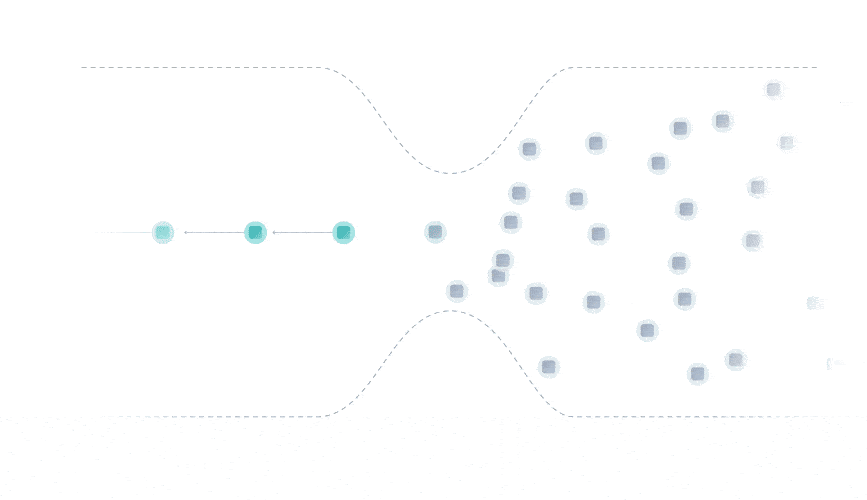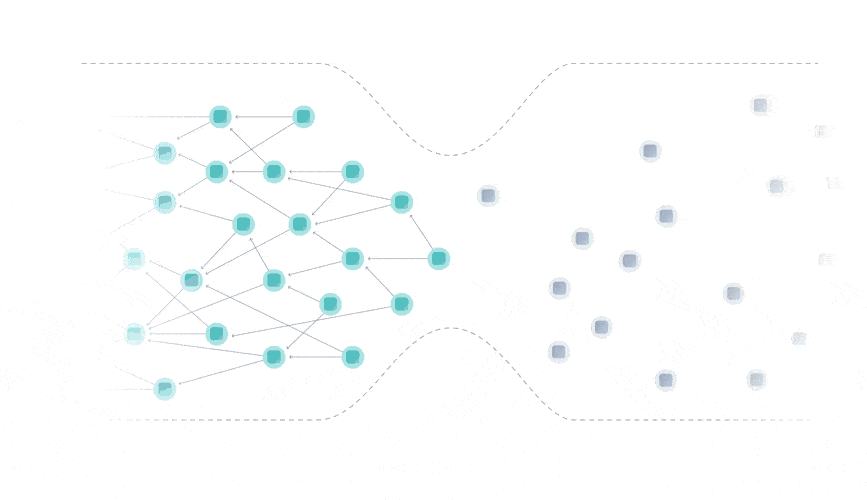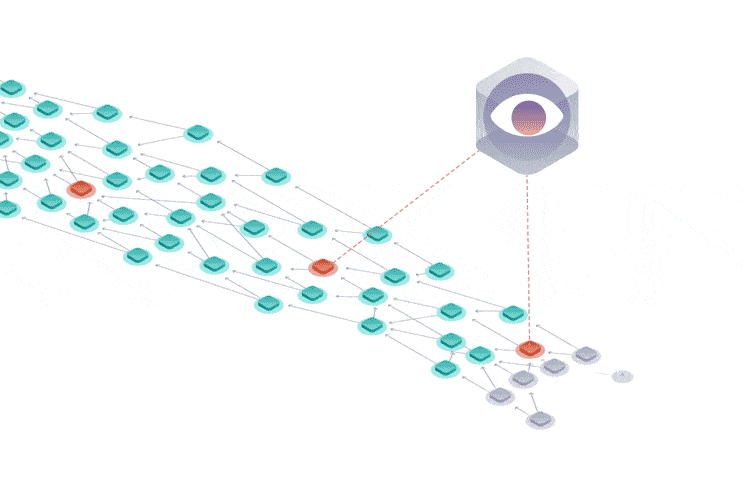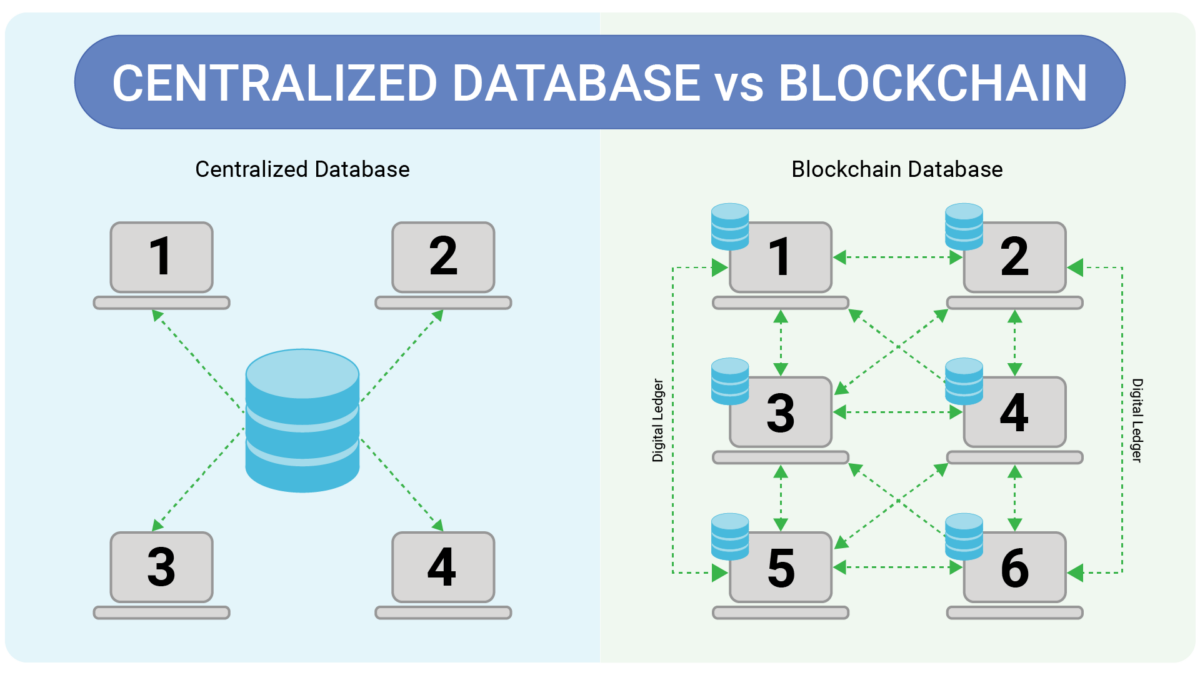Blockchain Database FAQs
What are Common Blockchain Database Use Cases?
Here are some common use cases for blockchain databases:
Blockchain – Software that captures transactions in an electronic ledger using cryptography for privacy and consistency and “distributed” among persons with access (public or private), eliminating intermediaries.
Blockchain/Crypto – Blockchain software used to capture transactions of digital “crypto” currencies.
Blockchain/Smart Contract – Computer programs on a blockchain that, when certain conditions or user actions occur, perform a function such as accessing data from a database, triggering next action, or automating a workflow.
Are Databases Also Used for DLTs (Distributed Ledger Transactions?
Yes. For example, the Tangle is a new type of distributed ledger technology that’s different than the traditional blockchain model. As explained by IOTA:
Blockchains and the Tangle both fall under the same top-level category: DLT. The main difference between the Tangle and a blockchain lies in its data structure, which gives the Tangle the following unique features:
- No transaction fees
- No miners
The blockchain data structure consists of a chain of sequential blocks, where each block contains a limited number of transactions. As a result, you can attach new transactions to only one place: A block at the end of the chain.
To secure the network against attacks, each block in a blockchain must be mined. Mining requires a lot of computational power, which is why miners are incentivized by transaction fees and block rewards.
Due to this block limitation known as the blockchain bottleneck, blockchain networks often experience slow confirmation times and high transaction fees.

The Tangle data structure is a directed acyclic graph (DAG), where each transaction approves two previous ones.
Rather than being limited to a single place for attaching new transactions, you can attach transactions anywhere in the Tangle, which drastically reduces the limit on confirmation times.

Instead of having miners, the Tangle is secured by a temporary finality device called the Coordinator that decides which parts of the Tangle are valid and should be confirmed.

This device is set to be removed in a project called Coordicide to make the Tangle completely decentralized.
Scalable data stores are critical for blockchains and DLTs that end up needing to store a lot of data. Having the right NoSQL database enables these applications to scale our data very easily and keep the data for a long period of time at a fine granularity level. [See how IOTA used scalable NoSQL for their supply chain digitization initiaitve].
What to Look For in Blockchain Databases
While blockchains, and more broadly distributed ledgers, are essentially de-centralized databases, blockchain nodes often require an underlying database for storing large data volumes. And whether for cryptocurrency transactions, trading NFTs, or implementing smart contracts, for public or private blockchains, an even for off-chain data, there is a common need for database speed, schema flexibility, being always on, keeping costs down, and the ability to scale high and fast.
How is Blockchain Different From Traditional Data Storage Models?
What is a blockchain database–and how does it differ from traditional data storage models? Blockchain database vs traditional database use cases differ in several ways, including:
Decentralization. One of the main advantages of blockchain over traditional storage is decentralization. Typically, traditional databases are centralized, meaning that they are controlled by a single entity, such as a government or a corporation—which represents a single point of attack. Blockchain is more resistant to tampering or hacking because it is maintained across an entire network of computers, distributing attack points and risk.
Immutability. Another of the important advantages of blockchain over traditional storage design is immutability. This is also the difference between blockchain models that are decentralized but are still not built on blockchain platforms, and therefore lack immutability, transparency, and other blockchain features. Once data is added to a blockchain, it cannot be deleted or altered without consensus from the network.
Security. An additional difference in blockchain storage is cryptography, which blockchain-based databases use. Traditional databases rely on access controls and other security measures, leaving data less secure.
Transparency. Blockchains are transparent by design, so all users can see all transactions that have been added to the blockchain. In contrast, traditional storage can be designed to limit access to any specific data or transactions.
Consensus mechanism. Blockchains rely on a consensus mechanism to validate transactions and add them to the database. This requires all users on the network to agree to the validity of a transaction before it can be added to the blockchain. Traditional storage models do not require this level of consensus.
The most common consensus algorithm used in blockchain databases validates transactions, adds new data, and stores data in blocks. This is the proof of work (PoW) algorithm, which requires miners to compete to solve complex problems to validate transactions and earn rewards.
A more energy-efficient and environmentally friendly alternative to PoW is a proof of stake (PoS) system such as Ethereum, in which validators are chosen based on their “stake” in the network—the amount of cryptocurrency that they hold. The more cryptocurrency a validator has, the more likely they are to be chosen to validate transactions and earn rewards (based on the idea that they won’t want to lose their stake).
How to Create Blockchain Databases
Typically, using blockchain as a database involves several complex steps:
Identify/define the requirements and purpose of the database. First, determine the specific purpose and requirements of the database. This includes identifying the type(s) of data to be stored, the level of security required, and the users who will have access to the database.
Choose a blockchain platform. There are several blockchain platforms that can serve as the database platform, each with unique features. Some examples include Ethereum, Hyperledger, and Corda.
Define the data schema. Next, define the data schema. Specify the structure and format of the data that will be stored in the database, such as data types, fields, and relationships between data.
Develop the smart contract to control the database. A smart contract is a self-executing program that runs on the blockchain platform and controls interactions between users and the database. Typically written in a programming language such as Solidity or Java, the smart contract defines the rules and logic for accessing and modifying the data in the database.
Deploy the database on the blockchain platform. Once the smart contract has been developed, it can be deployed on the platform. This creates a decentralized database that network users can access and modify.
Test and maintain the database. Test the database thoroughly to ensure it functions correctly and meets all of your requirements. Ongoing maintenance is essential to ensuring the security and integrity of the database over time.
Types of Blockchain Databases
There are several types of blockchain databases, including:
Public blockchains. Public blockchains are open to anyone and are not controlled by a central authority. Examples of public blockchains include Bitcoin and Ethereum.
Private blockchains. Private blockchains store data in blocks that are permissioned, so only authorized users can access and participate in the network. Private blockchains are often used by businesses and organizations for internal record-keeping and transactions.
Consortium blockchains. Consortium blockchains are similar to private blockchains, but they are operated by a group of organizations rather than a single entity.
Hybrid blockchains. Hybrid blockchains combine elements of public and private blockchains, allowing for greater flexibility in terms of access and participation.
Sidechains. Sidechains are separate blockchains that connect to the main blockchain, allowing for the creation of new applications and services that can interact with the main blockchain.
Federated blockchains. Federated blockchains are similar to consortium blockchains, but they are controlled by a group of independent organizations rather than a single entity.
Blockchain graph database. A blockchain graph database combines the features of blockchain technology and graph databases, storing data in the form of nodes and edges, allowing for more complex relationships between data to be modeled and queried. A graph database blockchain records transactions as nodes, and records the relationships between those transactions as edges. This enables sophisticated analysis of transaction data, including the ability to identify patterns, trace the flow of funds, and detect fraudulent activity. This type of database is particularly good at analyzing complex transaction data and detecting patterns and anomalies that may be missed by other types of databases.
Blockchain relational database. A blockchain relational database combines the features of both traditional relational databases and blockchain technology. This database stores data in tables with predefined relationships, but also uses blockchain technology to ensure the integrity and security of the data. In this kind of blockchain SQL database, each record or entry is assigned a unique cryptographic hash, which is then added to the blockchain, creating a tamper-proof record of all changes to the database. Blockchain relational databases can be useful in applications where the data security of blockchain vs relational database flexibility are both essential.
Benefits of Blockchain Database Technology
Blockchain database technology offers several benefits, including:
Decentralization. Blockchain is a decentralized database and data storage solution, out of the control of any single entity or organization. This makes it more resistant to tampering, hacking, and corruption.
Security. Blockchain secures data using cryptography, making it more difficult for attackers to tamper with or steal data. This makes it a more secure way to store information and sensitive data such as financial or medical records.
Transparency. Blockchain is transparent by design: all users can see all transactions added to the blockchain. This makes tracking asset movement easier and can help prevent fraud.
Efficiency. Blockchain eliminates the need for intermediaries and reduces the time and cost of processing transactions, which can be more efficient than traditional databases.
Trust. Blockchain creates trust among users using a consensus mechanism to validate transactions and maintain database integrity. This is particularly useful for industries in which trust is at a premium, such as finance, healthcare, and supply chain management.
Accessibility. Blockchain can be accessed from anywhere in the world by a user with an internet connection. This makes it easier to participate in transactions and can help to increase financial inclusion.
There are also some disadvantages to blockchain database technology, including:
Complexity. Blockchain is complex. It can be difficult for many users to understand—and time-consuming and expensive to develop and maintain—a blockchain-based system.
Scalability. Blockchain can be slow and resource-intensive, which makes scaling up to handle large transaction volumes a challenge, particularly where speed and scale are at a premium.
Regulation. The regulatory environment around blockchain is still developing, and there is uncertainty about how existing laws and regulations will apply to blockchain-based systems. This creates legal and compliance risks for businesses and organizations.
Energy consumption. The process of verifying transactions in a blockchain demands massive amounts of computational power, with high costs and environmental impact.
Immutability. While immutability is a benefit of blockchain, it can also be a disadvantage in certain situations. For example, if an error is made in a transaction or if fraudulent data is added to the blockchain, it can be difficult or impossible to correct or remove it.
Deciding whether to use a blockchain database or a traditional database for a project depends on the specific requirements and characteristics of the project. Here are some factors to consider when making this decision:
Project security demands. If the project requires a high level of security and trust, such as financial or healthcare applications, the built-in security features of a blockchain database such as immutability and cryptography may be a better choice.
Scaling and processing demands. High scalability and fast processing demands for large volumes of transactions may call for a traditional database as blockchains can be slower and less efficient based on consensus and validation of transactions.
Cost. A traditional database is better suited for limited resources and budgets, as blockchain can be expensive in both development and maintenance stages.
Regulatory compliance. There is a fair amount of legal uncertainty surrounding blockchain. As a result, for projects that demand compliance with existing laws and regulations, a traditional database may be preferable.
Need for Intermediaries. If the project will operate more smoothly in a decentralized manner without the need for intermediaries, blockchain may be preferable. A traditional database may be more appropriate for projects that require intermediaries to manage or verify transactions, as blockchain eliminates intermediaries and allows for direct peer-to-peer transactions.
Does ScyllaDB Offer Solutions for Blockchain Database Storage?
Yes, ScyllaDB provides a unique blend of speed, scale and efficiency coupled with flexible NoSQL data modeling and fault tolerance to underpin data-intensive blockchain applications running in the cloud or on premise.

